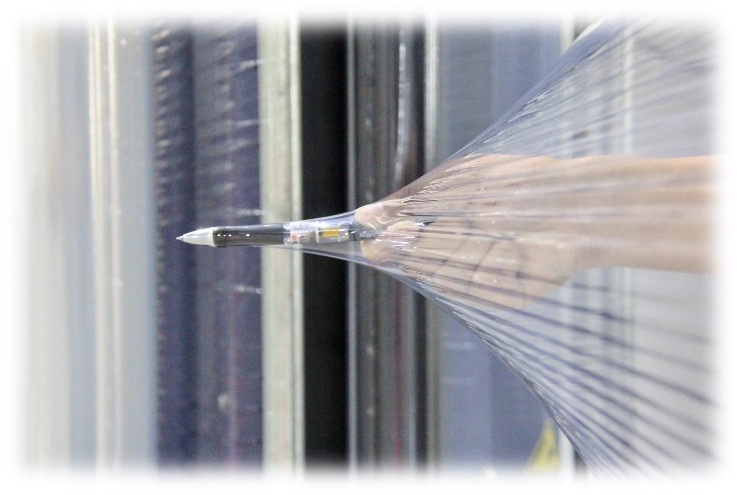Stretch film is a strong, elastic plastic wrap used to stabilize palletized loads during transport. It prevents product damage, dust, and moisture while reducing shipping costs. Industrial-grade films offer puncture resistance for sharp-edged items.

1.What is Stretch Film Puncture Resistance?
Puncture resistance is a critical performance metric for stretch film, measuring its ability to withstand penetration by sharp or hard objects. This property is especially vital for packaging applications involving sharp-edged contents, as it directly impacts packaging integrity and transportation safety. During logistics and storage, stretch films endure various external forces, with puncture being one of the most common failure modes. Accurate testing and understanding of puncture resistance provide essential guidance for packaging engineers and purchasers.
2.Impact of Stretch Film Application States on Puncture Resistance
2.1 Unstretched State (Optimal Puncture Resistance)
– Performance: Highest puncture resistance; minimal risk of penetration.
– Example: A 17μm film retains its original thickness when unstretched.
– Advantage: Thick film structure effectively resists sharp objects.
2.2 Fully Stretched State (Poorest Puncture Resistance)
– Performance: Puncture resistance drops nearly to zero.
– Example: A 17μm film thins to ~4μm at maximum stretch.
– Risk: Extremely thin layers are prone to puncture and tearing.
2.3 Moderately Stretched State (Balanced Performance)
– Stretch Ratio: ~240% (17μm → 5–6μm).
– Advantages:
– Better puncture resistance than fully stretched films.
– Superior load containment vs. unstretched films.
– Ideal balance for most packaging scenarios.
3.Comparison of Global Testing Standards
3.1 Chinese Standard: GB/T 21302-2007 (Static Test)
– Method: Uses a 100mm sample and a fixed-speed puncture probe to measure maximum penetration force.
– Limitation: Fails to simulate real-world stretched conditions.
3.2 International Standards
ASTM D1709-22 (Dart Drop Impact Test)
– Principle: A weighted dart strikes the film; measures energy at 50% failure rate.
– Applications: Dynamic impact simulation; common in North America.
ISO 7765-1 (Puncture Resistance Test)
– Principle: Constant-speed probe measures max force (N) or energy (J).
– Applications: Static testing adaptable to stretched states; widely used in Europe/Asia.
ASTM F1306 (Slow Puncture Test)
– Principle: Low-speed puncture (e.g., 50mm/min) mimics wrapping forces.
– Advantage: Closer to real-world conditions.
However, these conventional static testing methods exhibit significant limitations: they fail to accurately simulate the stress conditions stretch films experience during actual application. In real-world usage, stretch films wrap products while under tension, yet static testing cannot reflect puncture resistance variations under such dynamic conditions. Consequently, relying solely on static test results proves inadequate for comprehensively evaluating a stretch film’s practical performance.
4.ESTL750 Dynamic Testing System
4.1 Dynamic Puncture Testing:
– Simulates 0–300% stretch ratios.
– Adjustable speeds (5–500mm/min).
– High precision (0.01mm resolution).
4.2 Comprehensive Evaluation:
– Stretch performance (up to 300% ratio).
– Full wrapping process simulation.
– Interlayer bond strength testing.
4.3 Technical Advantages
– Accuracy: ±0.5% force measurement; 1000Hz sampling.
– Compliance: Supports ASTM, ISO, and GB standards.
– Smart Operation: Touchscreen interface, cloud data storage.
5.Conclusion
Yuandian Nano Stretch Film, as China’s sole user of the ESTL750 testing system, delivers 50% enhanced puncture resistance through proprietary nanotechnology and comprehensive dynamic testing, ensuring superior protection for high-value and sharp-edged cargo packaging solutions.
